Storage tests Intel
The nice thing, of course, is that we can fully extend the clock rates of the memory kit. The question, however, remains what it will bring in the first place. We use our standard testbenches from the launch articles and the Chiller to cool the CPU. The rest of the test setup is already on the first page.
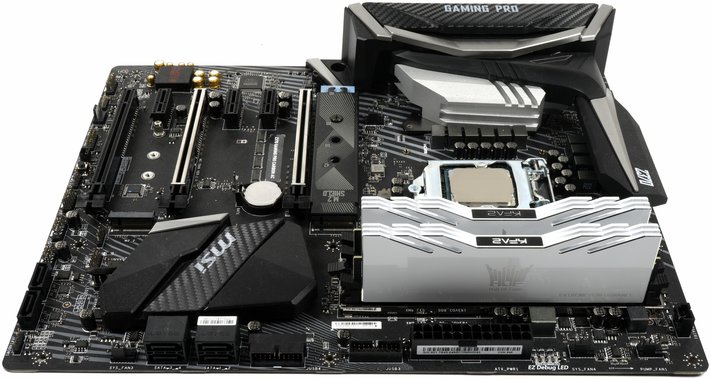
For the Intel CPU, we set the 100% mark to the official clock of 2666 MHz, but scale from DDR4 2133 to DDR4 4000 and start with the application benchmarks, where we normalize and cumulate CPU composite values (compute, rendering, etc.) to overall index in percent.
The jump from DDR4 2133 to DDR4 2400 is expected to be the largest. What is surprising, however, is the almost linear scaling, if you make an effort to set the optimal timings. Between the standard memory clock specified by Intel and the maximum, there are on average just under 20%, but at the lower end you lose up to 10% quickly.
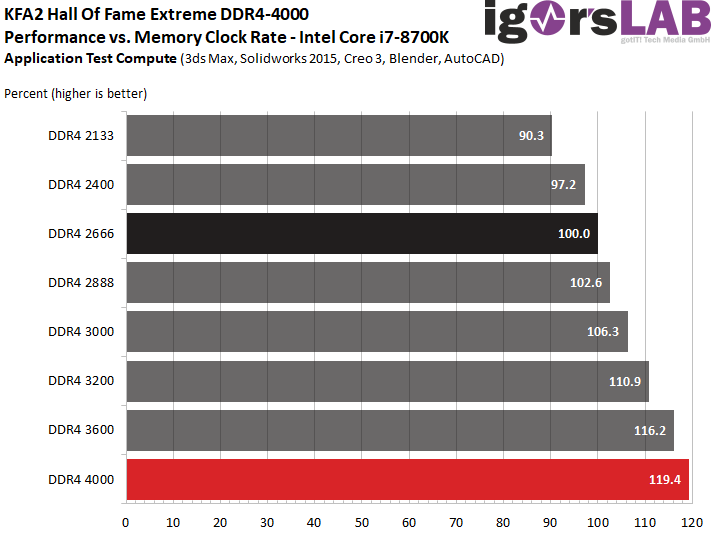
Interestingly, the growth in gaming is rather limited. With the GeForce GTX 1080 Ti and the WQHD resolution, we tried to find a compromise that was as realistic as possible, in which neither CPU nor GPU limited particularly one-sidedly. At only 9%, however, the increase is rather moderate, with the rates of increase falling sharply upwards. But it is also almost 9%, which shows that everything under DDR4 2400 is actually extremely braking.
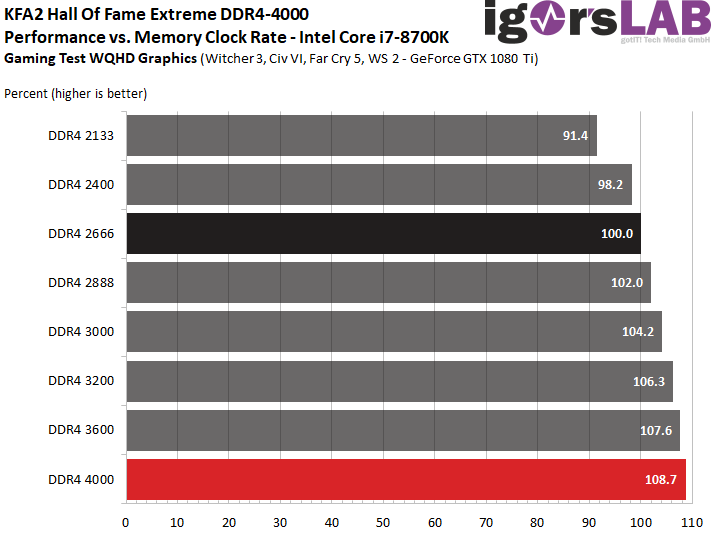
AmD Memory Tests
Of course, it's still a long way to DDR4 4000 for AMD's Ryzen CPUs, but it's stable and fast until DDR4 3466. That's why we're slowing down the memory a bit, but adjusting the settings to AMD's conditions.
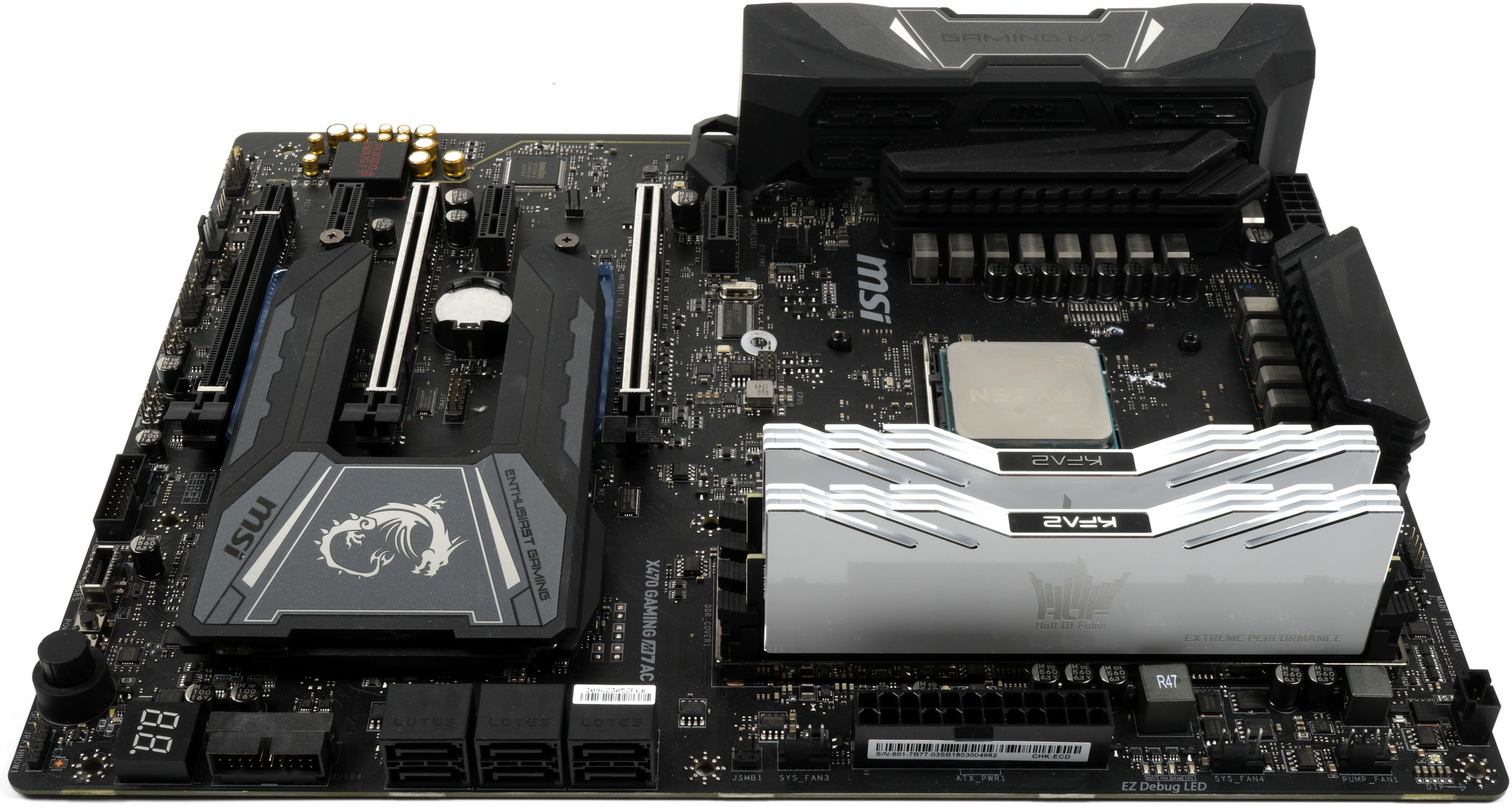
Our tested Ryzen 7 2700X uses a specified memory clock of 2933 MHz, which is slightly higher than the Intel CPU. We have also changed the intermediate steps a bit, as we cannot (and do not want) to use the same settings as at Intel. Applications are up almost 6%. That sounds little at first, but with almost 10% compared to the 2666 MHz of the Intel CPU, it would still be good in the profit zone for the application benchmarks.
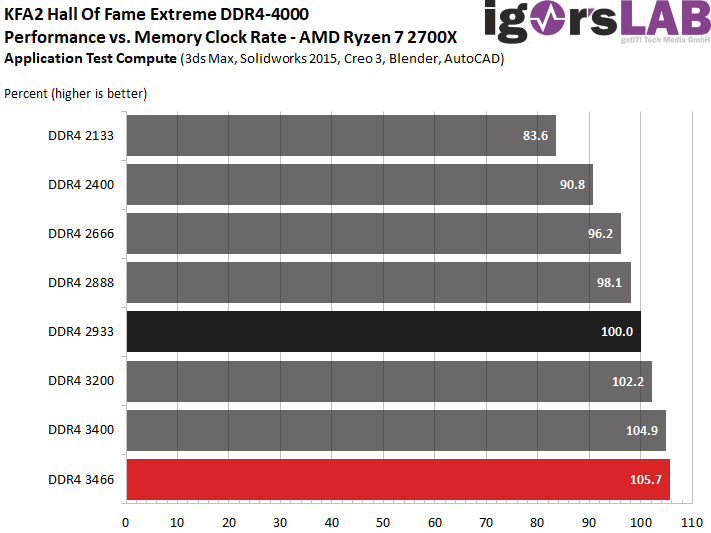
In gaming, the slump in growth is slightly smaller than that of Intel, although the absolute value is of course much lower here as well. With approx. 4% is added measurably compared to the specification, but the slightly worse timings at the maximum possible clock let the growth rate then tend towards zero. Incidentally, this applies equally to graphic and compute measurements.
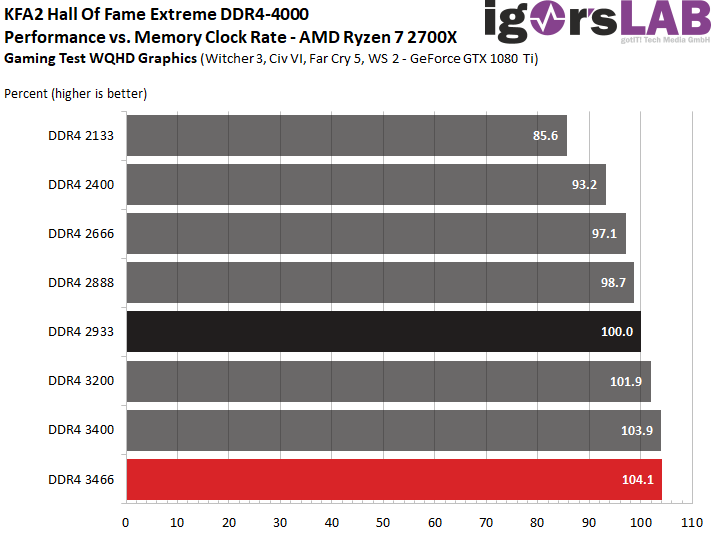
Summary and conclusion
Who can pay the prize or The KFA2 Hall Of Fame Extreme DDR4-4000 has 16 GB (2x 8GB kit) for the KFA2 Hall Of Fame Extreme DDR4-4000 16 GB (2x 8GB Kit). AT KFA2, you deliberately do without RGB Christmas tree simulations and concentrate on the essentials. This can then also be seen in the price, which is quite moderate compared to the competitors of the same speed.
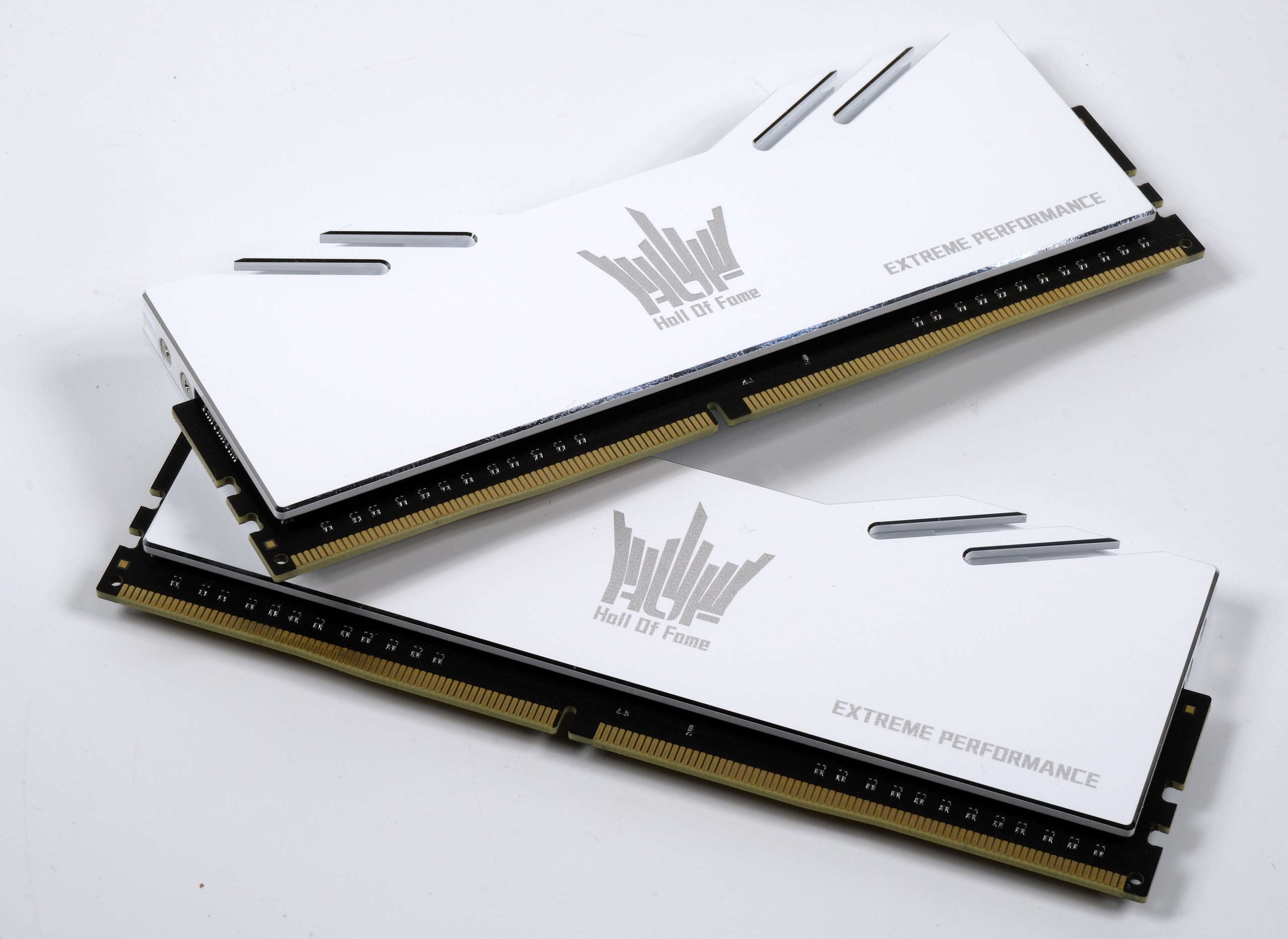
As an AMD user, you can of course also buy and use the kit if you want it to be Snow White Storage. But at 3466 MHz the Ryzen closes, so you can only recommend the RAM for optical reasons. The exercise would not give a deeper meaning.
What is left for us to conclude? KFA is once again pushing the price in its class, if you can write at DDR4 4000 and the current storage prices at all from cheaper or cheaper without the reader not knowing one. You have to be a bit crazy to do that. But: somehow this also has its charm, sometimes not the longest, but to have with the fastest. If the signature is always really good, I have let myself be told.
































Kommentieren